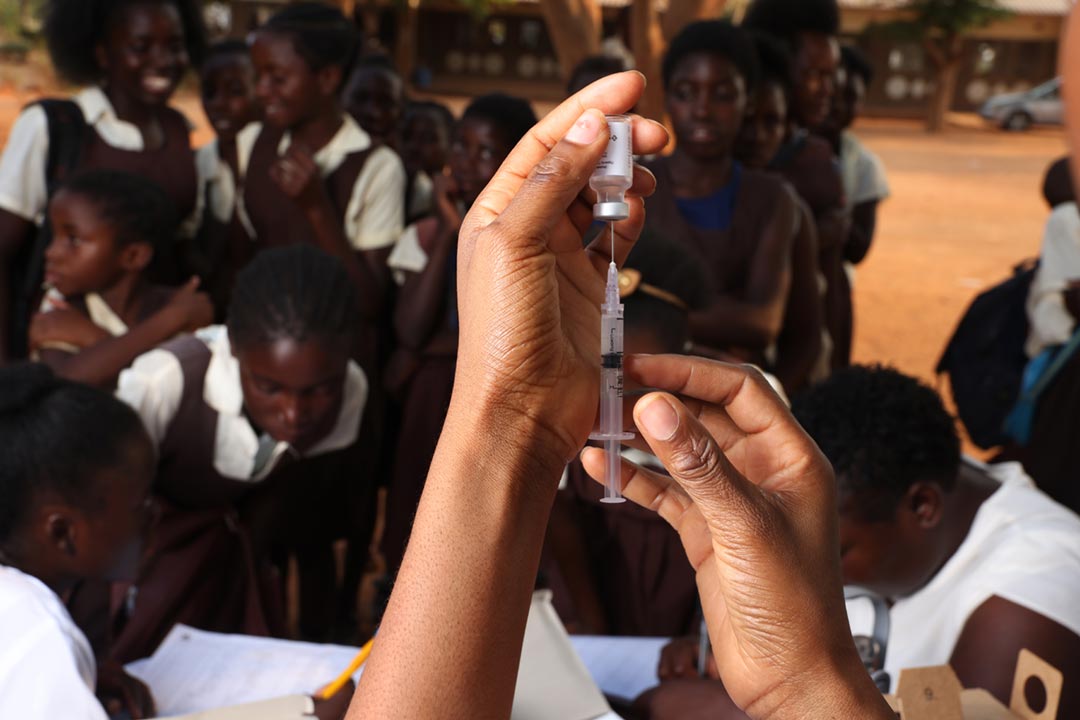EVALUATION OBJECTIVES
The overall goal of this evaluation was to identify opportunities and obstacles to sustainable, financing and programmatic performance of Zambia’s national immunisation programme. The evaluation was conducted in two phases.
Phase one of the evaluation focused on: the evaluation of the comprehensive multi-year plan (cMYP) as a resource planning and mobilisation tool; fiscal space analysis for immunisation; functionality and effectiveness of the Zambia Immunization Technical Advisory Group (ZITAG) and related technical committees; and effects of the COVID-19 pandemic on immunisation service delivery.
Phase two of the evaluation focused on: financial and non-financial resources available at subnational level for immunisation activities; and the national introduction of the HPV vaccine, assessing its implementation from programmatic and financial perspectives.
EVALUATION METHODS
This evaluation used a mixed-methods approach. In phase one, data was collected at both national and subnational levels. The following data collection methods were employed: resource tracking surveys; stakeholder surveys; key informant interviews (KIIs); focus group discussions (FGDs); government immunisation expenditure extraction from secondary sources; and document reviews.
In phase two, data was collected via immunisation expenditure tracking surveys; a qualitative evaluation of the implementation of the HPV vaccine (i.e. introduction of the HPV vaccine into the routine immunisation programme) using a theory of change for vaccine routinisation; a micro-costing exercise to estimate the cost of the implementation of the HPV vaccine at district level; and a survey to elicit perceptions from immunisation stakeholders.
FINDINGS AND CONCLUSIONS
Click here to explore key findings for each evaluation phase.
REPORT 1 (2020)
Phase 1 focused on these questions:
To what extent are the operational costs related to routine immunisation delivery in the cMYP reliable and valid; and to what extent is the cMYP used for resource planning and mobilisation?
What is the scope for expanding fiscal space to support the national immunisation programme?
What is the functionality and effectiveness of ZITAG and related committees that have been set up to support decision-making processes around new vaccine introduction from a financial and programmatic sustainability perspective?
To what extent has the outbreak of COVID-19 affected the financing and delivery of immunisation services in the country?
Please consult the report and associated policy briefs for findings and recommendations.
Policy brief: protecting immunisation financing
Policy brief: impact of COVID-19
Policy brief: effectiveness of EPI committees
REPORT 2 (2021)
Phase 2 focused on these questions:
What financial and non-financial resources are available at subnational level for immunisation activities and what are the sources and ultimate uses of the funds for immunisation?
To what extent is the national introduction of the HPV vaccine being implemented as planned from a programmatic and financial perspective and what lessons can be drawn for future implementation?
Please consult the report for findings and recommendations.

